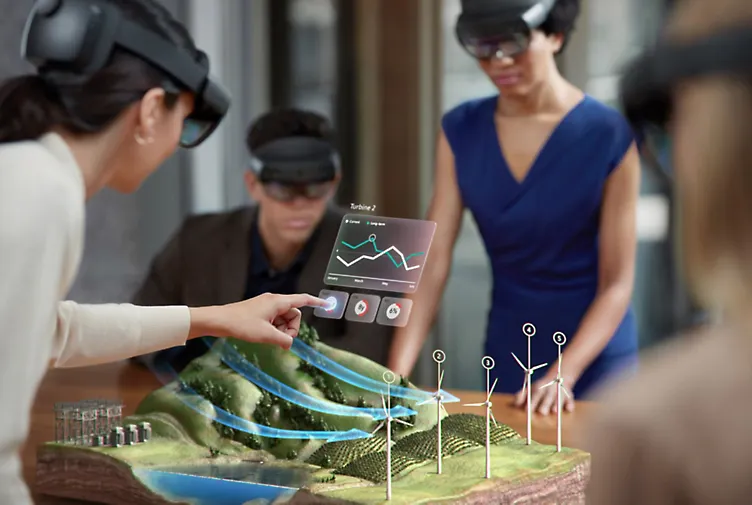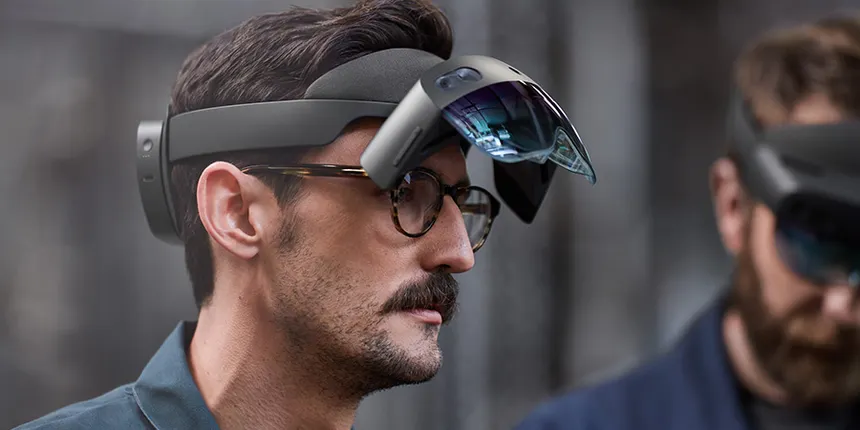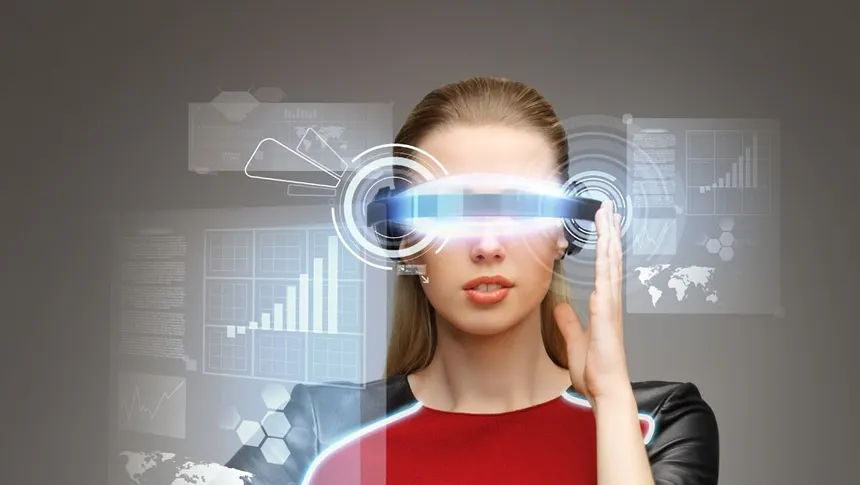Augmented Reality (AR) is no longer just a futuristic concept—it is actively transforming education and training across the world. From interactive lessons to hands-on simulations, Augmented Reality enhances learning experiences, making them more engaging, immersive, and effective. As classrooms and training centers evolve, Augmented Reality is proving to be a game-changer in knowledge acquisition and skill development.
What is Augmented Reality (AR)?
Augmented Reality (AR) is a technology that overlays digital information—such as images, videos, and 3D models—onto the real world through devices like smartphones, tablets, and AR headsets. Unlike Virtual Reality (VR), which creates a completely virtual environment, AR enhances the existing surroundings, making it an ideal tool for education and training.

How Augmented Reality is Transforming Education
1. Enhancing Student Engagement
- Augmented Reality makes learning interactive by incorporating 3D models, animations, and simulations.
- Students can visualize complex subjects such as human anatomy, space, and history in a more dynamic way.
- Hands-on learning leads to better retention and understanding of concepts.
2. Bringing Abstract Concepts to Life
- AR applications allow students to see and manipulate digital objects in real-world environments.
- Difficult subjects like physics and chemistry become easier to grasp through visual representation.
- Example: Augmented Reality apps like Google Expeditions allow students to explore the solar system in 3D.
3. Personalized Learning Experiences
- AR enables customized educational experiences based on individual student needs.
- Interactive lessons cater to different learning styles—visual, auditory, and kinesthetic.
- Teachers can track progress and adapt lessons accordingly.
4. Making Remote Learning More Interactive
- Augmented Reality bridges the gap between traditional and digital learning, making online education more immersive.
- Students can conduct virtual lab experiments and participate in 3D simulations from home.
- Example: AR-powered apps like Merge Cube allow students to hold and interact with digital objects.

The Role of Augmented Reality in Professional Training
1. Skill-Based Training in Various Industries
- AR provides real-world training without physical risks or limitations.
- Industries such as healthcare, aviation, and manufacturing use AR simulations for hands-on practice.
- Example: Medical students use AR to perform virtual surgeries before practicing on real patients.
2. Reducing Training Costs and Time
- Traditional training methods often require expensive equipment and long preparation times.
- AR minimizes costs by eliminating the need for physical materials and travel.
- Example: Airlines use Augmented Reality to train pilots, reducing the need for costly flight simulators.
3. Workplace Safety Training
- AR helps workers practice safety protocols in a risk-free environment.
- Employees in high-risk industries like construction and firefighting can train in lifelike scenarios.
- Example: AR fire drills prepare employees for emergency situations without real danger.

Challenges of Implementing AR in Education and Training
1. High Initial Costs
- AR technology requires investment in devices, software, and development.
- Not all schools and institutions can afford the necessary infrastructure.
2. Limited Access to Technology
- Many students and employees may not have access to AR-enabled devices.
- Internet connectivity and hardware limitations can affect the effectiveness of AR learning.
3. Need for Teacher and Trainer Adaptation
- Educators and trainers need to be trained to integrate AR effectively.
- The transition from traditional methods to AR-based learning may require time and effort.
The Future of AR in Education and Training
- AR is expected to become more affordable and widely accessible in the coming years.
- Integration with AI and machine learning will further personalize education.
- AR-powered smart classrooms and training centers will revolutionize learning experiences.
Conclusion
Augmented Reality is shaping the future of education and training by making learning more interactive, engaging, and effective. As technology advances, AR will continue to break barriers, making high-quality education and skill development accessible to learners worldwide. Institutions and industries that embrace AR early will be at the forefront of this revolutionary change.
Fast Fashion’s Dirty Secret: The Hidden Environmental Cost & Greener Choices






